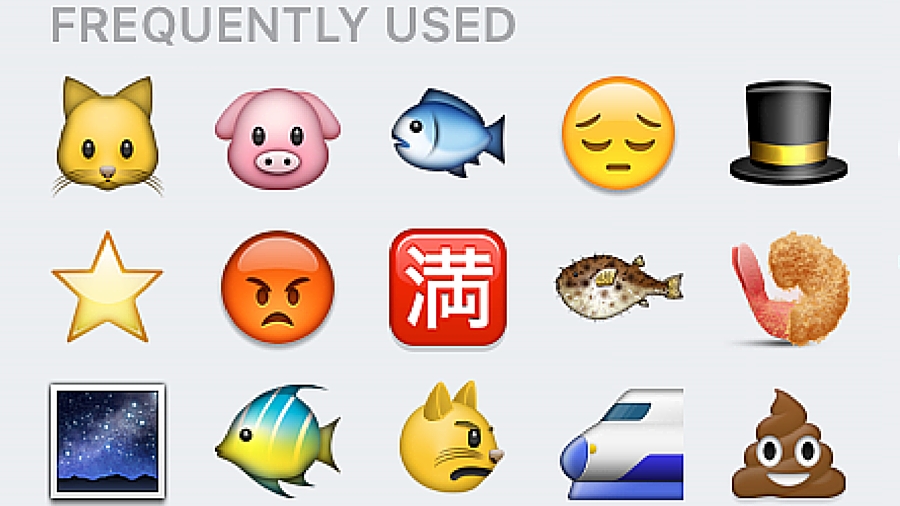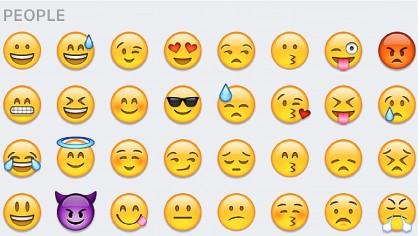Is the internet killing off language?
Emojis and micro-blog slang are changing the way we communicate

The internet is changing the way we communicate. LOL, awks, amazeballs, BRB, the use of emoji and emoticon – and even writing facial expressions such as 'sad face' – have all become standard in digital communications. So ingrained, in fact, that they're changing the way we write and even talk.
"People are becoming less concerned with grammar, spelling and sentence structure, and more concerned with getting their message across," says Gavin Hammar, CEO and founder of Sendible, a UK-based social media dashboard for business.
There's no doubt that the consumption of abbreviated digital content is having a huge effect on language. "Over the last five years attention spans have shortened considerably, which is reflected in the contracted forms of language we see in social media," says Robin Kermode, founder of communications coaching consultancy Zone2 and author of the book 'Speak So Your Audience Will Listen: A practical guide for anyone who has to speak to another human being'.
However, some think that the internet has made us better communicators since we increasingly use much more streamlined language. "To get a message across using Twitter for example, it must be concise and must conform to the tone used there, which includes abbreviations, acronyms and emoticons," say Hammar.
What about emoticons and emojis?
The fastest growing 'new language' in the world is emoticons (faces) and emojis (images of objects, which hail from Japan), which are one of the biggest changes caused by digital communications. "Facial expressions, visual presence and body language have always been vital to being a confident speaker, but now emojis are blurring the lines between verbal and written communication," thinks Kermode, who adds that cavemen had early versions of emojis on the sides of their caves. "Pictures, cartoons or emojis are 'shortcuts' so we can be clear about what our message really means."
If you mainly use emojis, why not get a keyboard based around smiley faces and cartoon icons? That's exactly what Swyft Media recently created, and while it's more of a PR stunt the keyboards of the future will probably contain at least some emojis.
How emojis add meaning
Emoticons and emoji are arguably more meaningful than slang and shorthand, which can be too easily misunderstood. "I once witnessed a girl being dumped in a text, which consisted of a message with just five letters, 'U R MY X' – linguistically economic, but emotionally harsh," says Kermode. Trouble is, the sender had actually meant 'YOU ARE MINE. X'. "If he'd added three emojis – like a smiley face, a heart and a wedding ring, he might now be happily married!"
Are you a pro? Subscribe to our newsletter
Sign up to the TechRadar Pro newsletter to get all the top news, opinion, features and guidance your business needs to succeed!
The same goes for a statement such as "I NEED TO SPEAK TO YOU RIGHT NOW", which needs a qualifying emoticon or emoji to give it meaning. "It could signal an angry meeting or a passionate meeting but add a coffee cup, a big smiley face or an angry face and it becomes clear what's really going on," says Kermode.
They may be derided by traditionalists, but emoticons and emojis used to describe mood are the body language add-on that the written word has always lacked. In most instances, these icons represent language evolution and progress, not regression.

The web's positive effects on writing
Some think that the internet is actually sharpening up writing skills, particularly of professional writers, creating new niches and specialisms. "[The internet] lays bare the disparity between good and bad copy, which has resulted in writers and editors becoming better educated and more aware of global grammatical standards, raising the bar overall," says Paul Parreira, founder of digital content creation agency Company Cue, which has a network of 800 highly skilled writers and programming experts working in 32 languages.
He thinks that the internet is also driving language to become more globalised, with Americanisms such as 'road trip', 'what's up?' and 'like' being used as a conversational link now ingrained into what's fast being called 'International English' or ELF (English Lingua Franca). It has nothing to do with where the language originated, and often those that use a basic form of ELF online can understand each other far easier than native English speakers.
However, online English has also spawned new specialism and skills among professional, often native English speaking writers. "Writing has become more idiosyncratic and unique," says Parreira, "creating new breeds of writers – those that specialise in short form and those that focus on long form … it's rare to find writers than can excel in both."
Jamie is a freelance tech, travel and space journalist based in the UK. He’s been writing regularly for Techradar since it was launched in 2008 and also writes regularly for Forbes, The Telegraph, the South China Morning Post, Sky & Telescope and the Sky At Night magazine as well as other Future titles T3, Digital Camera World, All About Space and Space.com. He also edits two of his own websites, TravGear.com and WhenIsTheNextEclipse.com that reflect his obsession with travel gear and solar eclipse travel. He is the author of A Stargazing Program For Beginners (Springer, 2015),
